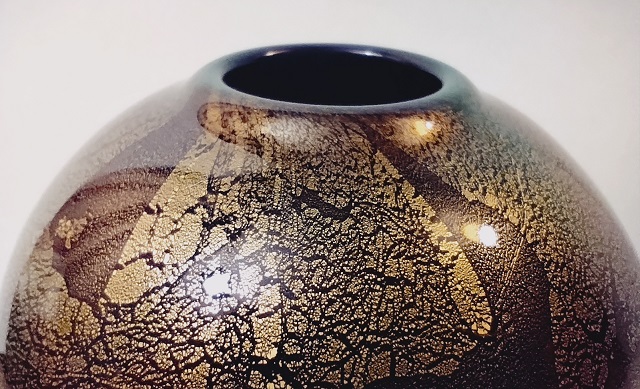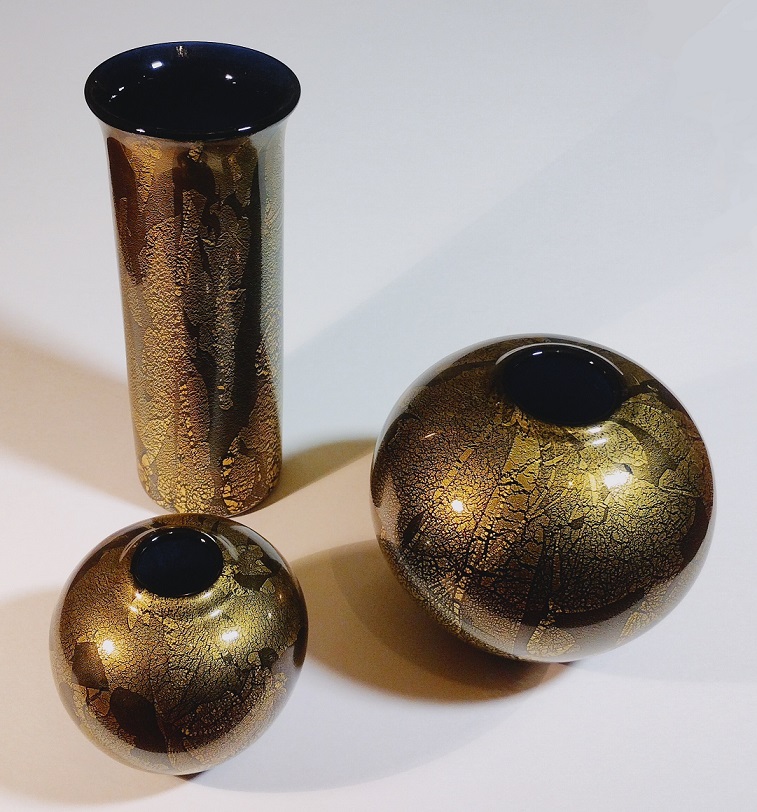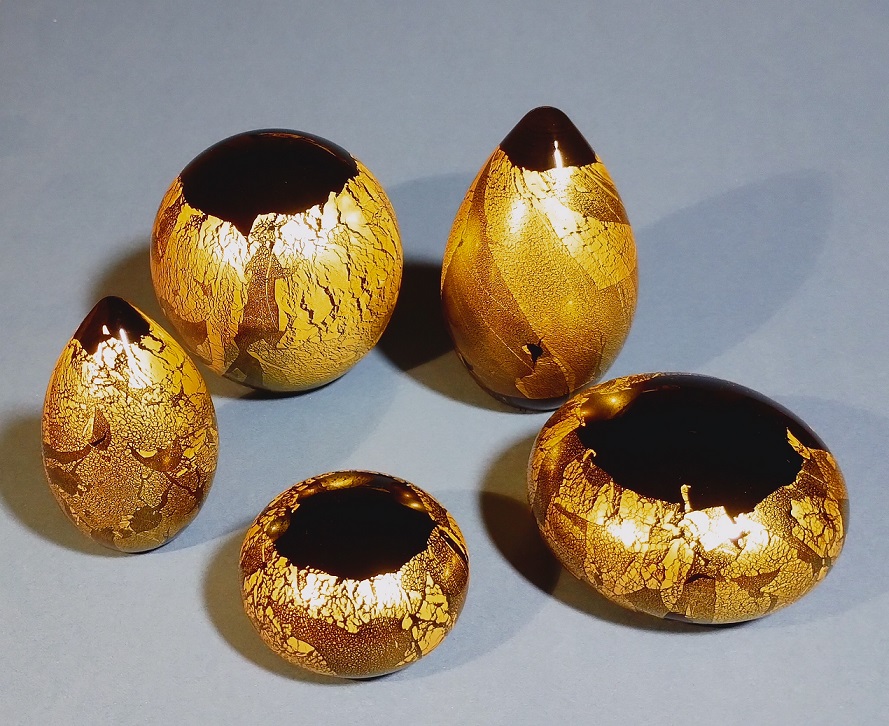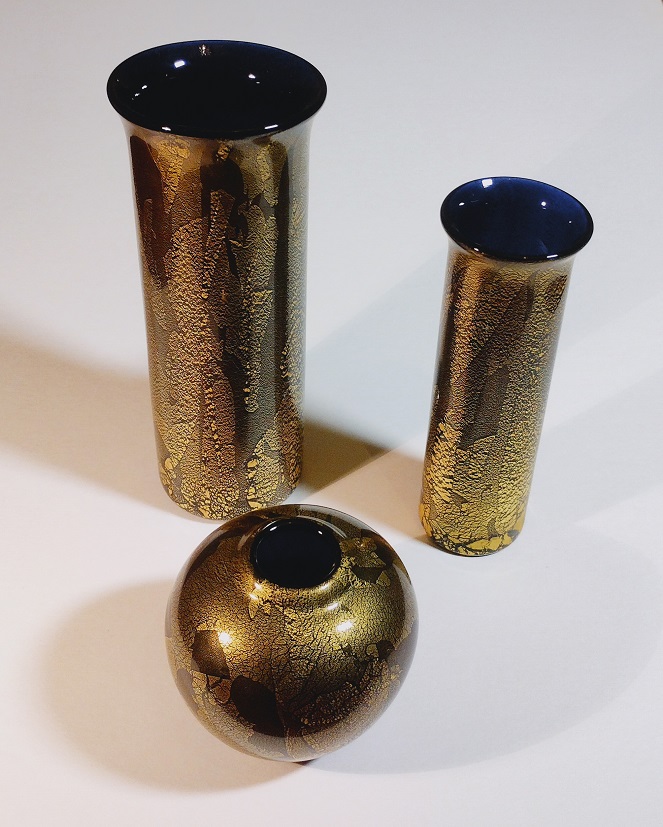
Bidding online at an auction last year I got a bit trigger happy and finished with several lots of Isle of Wight Studio Glass that I’d probably not expected to win. The intention was to resell the pieces, hopefully at a profit, but there’s a slight issue. Having brought them home, I’m not sure I want to part with them.
Viewing at a good auction can be a bit overwhelming. It’s very easy to get pulled from one eye-catching thing to another and picking out the ones you’d realistically like to own, or think might sell on easily, can be difficult. Ironically, it’s much easier at a poor auction where you dismiss most lots quickly and pick out the one or two things of interest to you. We’re not in a position to buy dozens of lots at an auction so there’s a need to be selective. At the same time, if you’re bidding online and a good looking lot is going through at a low price you want to have checked it out. That way you can get a bid in quickly if looks like a bargain is going begging. Be careful though, don’t bid on something you’ve not checked over because lots with damage, that no one wants, go cheaply! (If you’re new to auctions, have a read of my guide to buying at auctions).
At the auction in question, there had been a long break in activity to due to an internet connectivity issue at the auction house, during which bidding was suspended. When the connection was restored, it felt like most of the retail buyers had given up, leaving just a few hangers on to bid. Items in my “maybe, if it’s cheap” list suddenly seemed to be going through at the sort of level I’d only dreamed of. My wife tells me I got a bit carried away.

I’d seen individual Isle of Wight Glass “Azurene” vases and paperweights a few times at fairs and had always been drawn to them but I’d never seen a collection and hadn’t appreciated what a range of designs had been available. The design comes in a range paperweights and vases with several different glass colours each with either with gold or gold and silver leaf over the top. I think the black version looks particularly good and by the end of the auction I had (amongst other things) nine pieces; five paperweights and four vases.

Seeing lots in a large auction room can be very different to how they look when you get them home. Few auction rooms have great lighting and the lots for sale have a tendency to be at least a bit dusty so viewing is often a bit of an act of faith. On getting the glass home and I gave the pieces a (gentle) clean and in good light I could really appreciate them.
The Azurene pattern was apparently made between 1978 right up to the end of 2012, which presumably explains why it comes up from time to time at art and antiques fairs, although it’s rare to see multiple pieces together. There is no indication where in the time range the pieces I have were made. That’s a shame as it would be lovely to know if Michael Harris, the founder of of Isle of Wight Glass, had made them. The pieces are not signed, so maybe not, but at least each has it’s original Isle of Wight Glass sticker which are undamaged. The pieces look pristine.
The gold is, of course, gold leaf. I assume that the gold is applied whilst the glass is hot. To the touch, you can feel the gold bonded on the surface of the glass, but it’s not obviously fragile or prone to coming off. The patterning in the gold is unique to each piece as it depends on the way the gold splits and moves, presumably, as the glass freezes. On each piece the gold leaf wraps around and merges evenly so there’s no ‘join’ line. I’ve seen a couple of pieces at fairs where this isn’t the case. I wonder if those were sold as “seconds” as it looks slightly jarring when you’ve see a perfect piece.
Whilst it doesn’t do a lot for keeping them clean, the paperweights are very tactile, particularly the smaller ones. They look like water worn pebbles on a beach, made from obsidian and covered in gold. It’s hard to pick a favourite shape and in truth they look best in little groups. As with arranging plants in a flowerbed, clusters of odd numbers always look best so the five work well together as you can see in the photograph above. The retail price will have been several times the resale price so the original collector must have dug quite deep to get the set which probably explains why it’s rare to see groups.

The paperweights always look very black as do the vases from the outside but something my wife noticed looking at the vases in bright light (and mentioned on the Wight Glass Collectors web site) – the black isn’t actually black. If you look inside the vases you can see the colour is actually a very dark, inky blue. The vases I have come in two basic forms, either almost spherical or in the shape of a straight sided column. I think the spherical form was probably more popular judging by their presence at fairs, but if I was picking, I think either of the columnar ones would be my choice.
At the time of writing, these have been to one antiques fair with us. At what we think is a fair price, none of them sold but they generated more interest than anything else on the stall. That, at least, is a good thing as eye catching items encourage potential buyers to look more carefully to see what you have for sale (had one of our best days selling). I’m sure they will sell in the future, but for now, I’m very happy to just enjoy them.